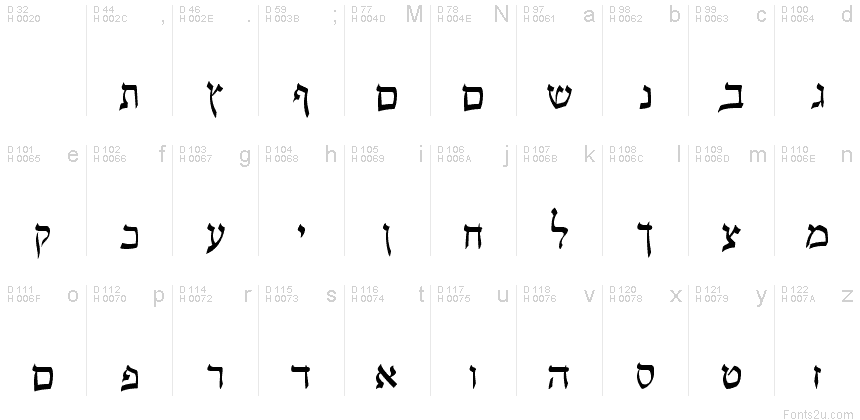

- #Hebrew fonts for mac how to#
- #Hebrew fonts for mac pdf#
- #Hebrew fonts for mac drivers#
- #Hebrew fonts for mac full#
The keyboards and stickers have full nikud, and also include nikud that was “forgotten” or is simply hard to find in both the DavkaWriter and OSX versions of Hebrew-QWERTY.
#Hebrew fonts for mac drivers#
Drivers for both Windows and OSX are included with the purchase of keyboards and sticker sets. Model א and Model ב both work equally well on either Windows or OSX You choose the version based on personal preference or what you might already be used to using. Model ב is compatible with the version of Hebrew-QWERTY found on Mac OSX. I was trying to keep my post from being little more than an advertisement, but since you have asked….Īleph-Board (makes printed keyboards and sticker sets in two versions: Model א is compatible with the version of Hebrew-QWERTY found in DavkaWriter software.
#Hebrew fonts for mac pdf#
You can also download a PDF version if you want. For those, I suggest taking a look at the Wikipedia article Niqqud. I have only added the most common nikud, although there are some more rare ones. Most of these nikud can be used on many different letters. The next two use a vav (ו) as the example, and the last two are specific to the sin/shin (ש). When I write Opt-Sh I mean Option-Shift together with the key shown after it. The first ten combinations are shown using the letter Aleph (א) as an example, with the nikud added.

You can download it as a PDF and print it out for easy reference. In order to make it easy to learn, I’ve created a chart that lets you figure out which key combination to use for each nikud.
Hebrew QWERTY can use most of the key combinations from the standard Hebrew layout as well, although not all. Just like Hebrew QWERTY tries to map the sounds of letters, it also tries to map the sounds of the nikud, so for the example above of the kubbutz, the key combination is Option-U (the kubbutz sounds like a U). For example, adding a kubbutz (which looks like three diagonally arranged dots – as in אֻ) is done by typing a letter and then the key combination Option-8. In the standard Hebrew layout, most of the nikud map to Option and a number. In both cases most nikud are added by using a special key combination, usually using Option (Alt) and a second key. For someone who works mostly in English and only occasionally needs Hebrew, Hebrew QWERTY is much quicker to learn.Īdding nikud to text can be done with either layout, although there are some differences. There are some useful shortcuts, like end-letters (in Hebrew some letters change form at the end of a word) simply being Shift and the standard key. Second, there is something called Hebrew QWERTY, which maps the Hebrew letters to the closest sounding letters in English, so for example Reish (ר) is mapped to the R and Nun (נ) is mapped to the N. On the Mac, there are two keyboard layouts you can use for Hebrew.įirst, there is the standard Hebrew layout that is what is used in Israel on all computers. For general information on nikud, and codes that can be used on Windows, see the Wikipedia article Niqqud. Keep in mind, I use a Mac, so these are Mac-specific instructions.
#Hebrew fonts for mac how to#
Recently, I had reason to add nikud to a document, and I decided to finally figure out how to add them. In general nikud are not needed for advanced readers of Hebrew, and if you were to buy a Hebrew-Language newspaper or a book in a bookstore, none of them would have nikud, except for when the meaning of the word could not be determined otherwise. In the above text, the blue marks are nikud. In Hebrew, unlike in English, vowels are written as a series of marks, generally below the other letters. Although using Hebrew on one’s computer is fairly simple, one thing that is not so simple is adding Hebrew nikud (vowels) to your text. I’ve written a couple of articles in the past about using Hebrew on your computer, specifically Finding Hebrew Fonts and the more niche Trick to use Hebrew and Yiddish in Adobe InDesign.


 0 kommentar(er)
0 kommentar(er)
